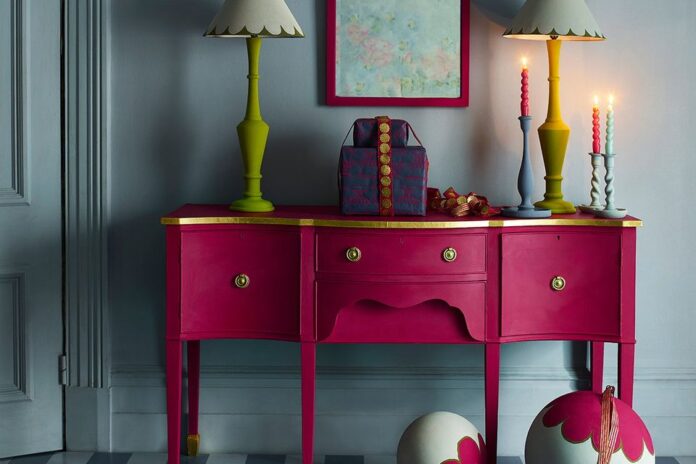In a world where sustainability and creativity intersect, upcycled furniture has emerged as a popular and eco-friendly alternative to traditional furnishings. By repurposing discarded materials and giving them new life, upcycling offers a sustainable solution to furniture production while unleashing boundless creativity and innovation.
Upcycled furniture refers to pieces that have been crafted from reclaimed or salvaged materials, such as wood, metal, or textiles, and transformed into functional and aesthetically pleasing items for the home. Unlike recycling, which involves breaking down materials to create new products, upcycling involves reusing existing materials in their original form, often with minimal processing.
Benefits of Upcycled Furniture
The rise of upcycled furniture is fueled by several compelling advantages:
- Environmental Sustainability: By diverting materials from landfills and reducing the demand for new resources, upcycling helps minimize environmental impact and promote sustainable living practices.
- Unique and Personalized Designs: Upcycled furniture pieces are imbued with character and charm, each telling a story of its previous life. From rustic farmhouse tables to industrial-style bookshelves, upcycled furniture offers endless possibilities for customization and personalization.
- Cost-Effectiveness: In addition to being environmentally friendly, upcycled furniture can also be budget-friendly. With a bit of creativity and DIY spirit, individuals can transform discarded items into stylish and functional pieces at a fraction of the cost of new furniture.
Upcycling Process
The process of upcycling furniture typically involves several key steps:
Sourcing Materials
The first step in upcycling furniture is finding suitable materials to work with. This may involve scavenging for discarded items, visiting salvage yards or thrift stores, or repurposing materials found around the home.
Design and Construction
Once materials have been sourced, the creative process begins. Designers and DIY enthusiasts alike brainstorm ideas and sketch out plans for their upcycled creations. From coffee tables made from old pallets to chairs crafted from reclaimed barn wood, the possibilities are limited only by imagination.
Finishing Touches
The final step in the upcycling process is adding finishing touches to the piece. This may involve sanding and staining wood surfaces, painting metal accents, or upholstering cushions with repurposed fabrics. Each finishing touch adds to the unique character and appeal of the finished piece.
Creative Ideas for Upcycled Furniture
Upcycled furniture projects come in all shapes and sizes, each showcasing the ingenuity and creativity of its creator. Some popular ideas include:
Repurposing Old Doors and Windows
Old doors and windows can be transformed into stunning pieces of furniture, such as headboards, room dividers, or outdoor benches. Their unique shapes and textures add a touch of vintage charm to any space.
Transforming Pallets into Furniture
Wooden pallets are a versatile and readily available source of material for DIY furniture projects. From coffee tables and bookshelves to bed frames and garden benches, pallets can be repurposed in countless creative ways.
Incorporating Salvaged Materials
From reclaimed lumber and metal piping to discarded fabric scraps and vintage hardware, salvaged materials offer endless possibilities for upcycled furniture projects. Whether it’s repurposing an old suitcase into a stylish side table or turning an industrial spool into a chic outdoor seating area, salvaged materials add character and uniqueness to any piece.
Challenges and Considerations
While upcycled furniture offers numerous benefits, it also presents some challenges and considerations:
Quality and Durability
Not all upcycled furniture is created equal. While some pieces may be sturdy and well-crafted, others may lack durability or structural integrity. It’s essential to carefully assess the quality of materials and construction when selecting or creating upcycled furniture.
Skill and Expertise Required
Upcycling furniture requires a certain level of skill and expertise, particularly when it comes to design, construction, and finishing. DIY enthusiasts may need to invest time and effort in learning new techniques or acquiring specialized tools to successfully complete upcycled furniture projects.
Market Demand and Trends
While interest in upcycled furniture is growing, it may still be considered a niche market compared to mass-produced furnishings. Designers and artisans must carefully gauge market demand and trends to ensure the viability of their upcycled furniture businesses.
Inspiration and Examples
To inspire and motivate aspiring up cyclers, here are some examples of innovative and inspiring upcycled furniture projects:
- Bicycle Wheel Table: An old bicycle wheel repurposed into a stylish coffee table with a glass top.
- Wine Barrel Chair: A reclaimed wine barrel transformed into a cosy lounge chair with a cushioned seat and backrest.
- Vintage Suitcase Nightstand: An antique suitcase mounted on hairpin legs to create a charming bedside table with storage.
Tips for DIY Upcycling
For those interested in trying their hand at upcycling furniture, here are some practical tips to get started:
Safety Precautions
Always wear appropriate safety gear, such as gloves, goggles, and dust masks, when working with power tools or handling potentially hazardous materials.
Tools and Resources
Invest in quality tools and equipment, such as saws, drills, and sanders, to ensure precision and efficiency in your upcycling projects. Additionally, seek out online tutorials, workshops, and community resources to expand your skills and knowledge.
Step-by-Step Guides
Follow step-by-step guides and tutorials to help guide you through the upcycling process. Many online resources offer detailed instructions and tips for specific projects, making it easier for beginners to get started.
Conclusion
Upcycled furniture offers a sustainable and creative solution to the challenges of modern consumerism. By repurposing discarded materials and unleashing creativity and innovation, upcycling transforms waste into treasure, creating unique and environmentally friendly furnishings for the home.




